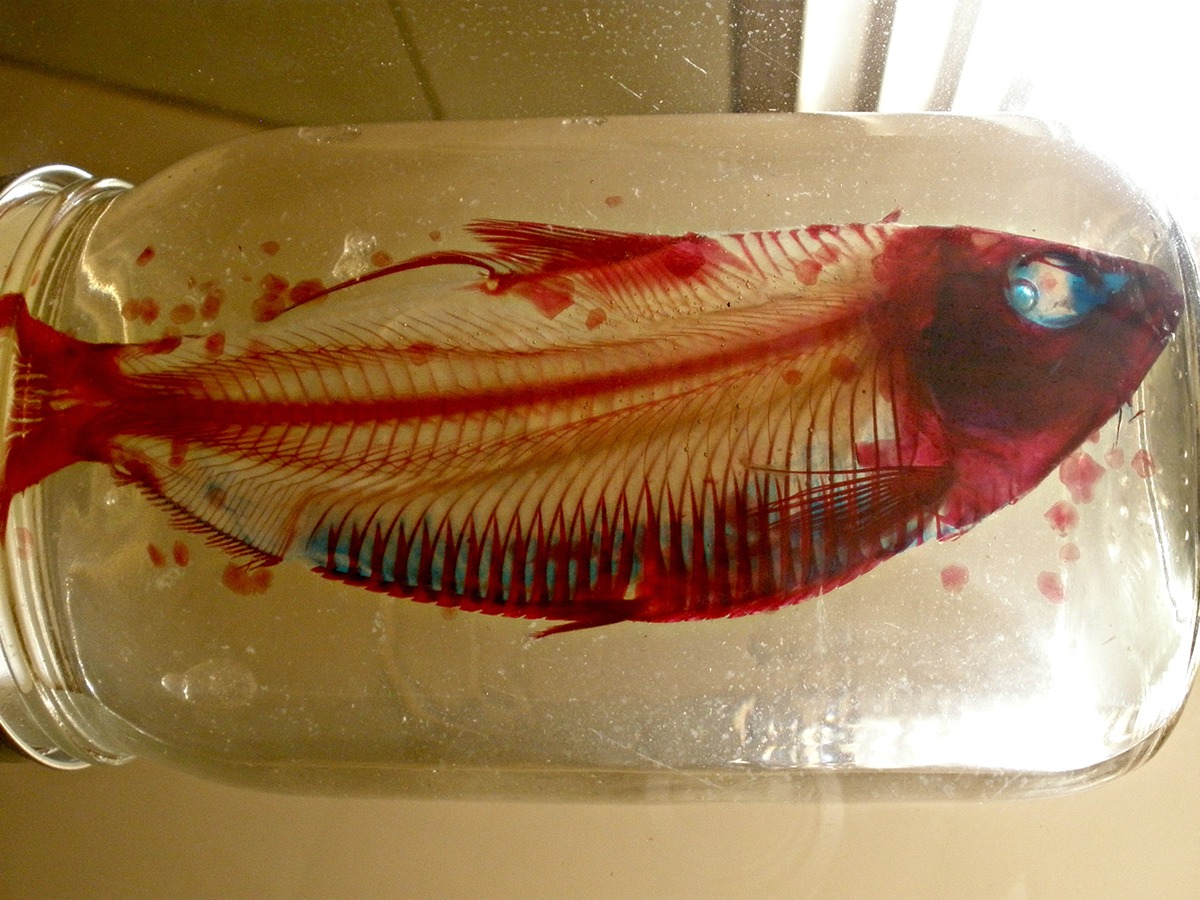

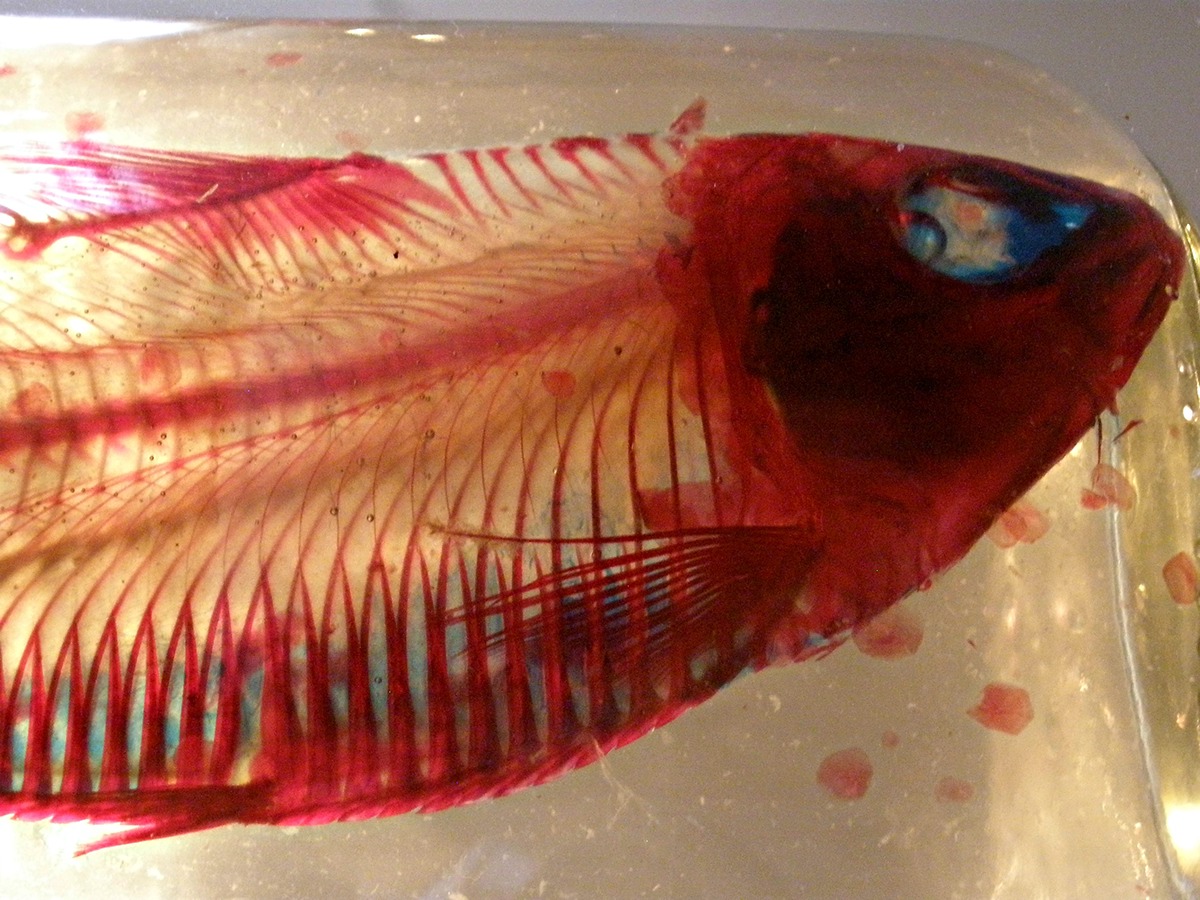
Diaphonized herring.

Diaphonized herring.

Small fish in their final containers in 95% glycerin with thymol crystals as an antifungal preservative.
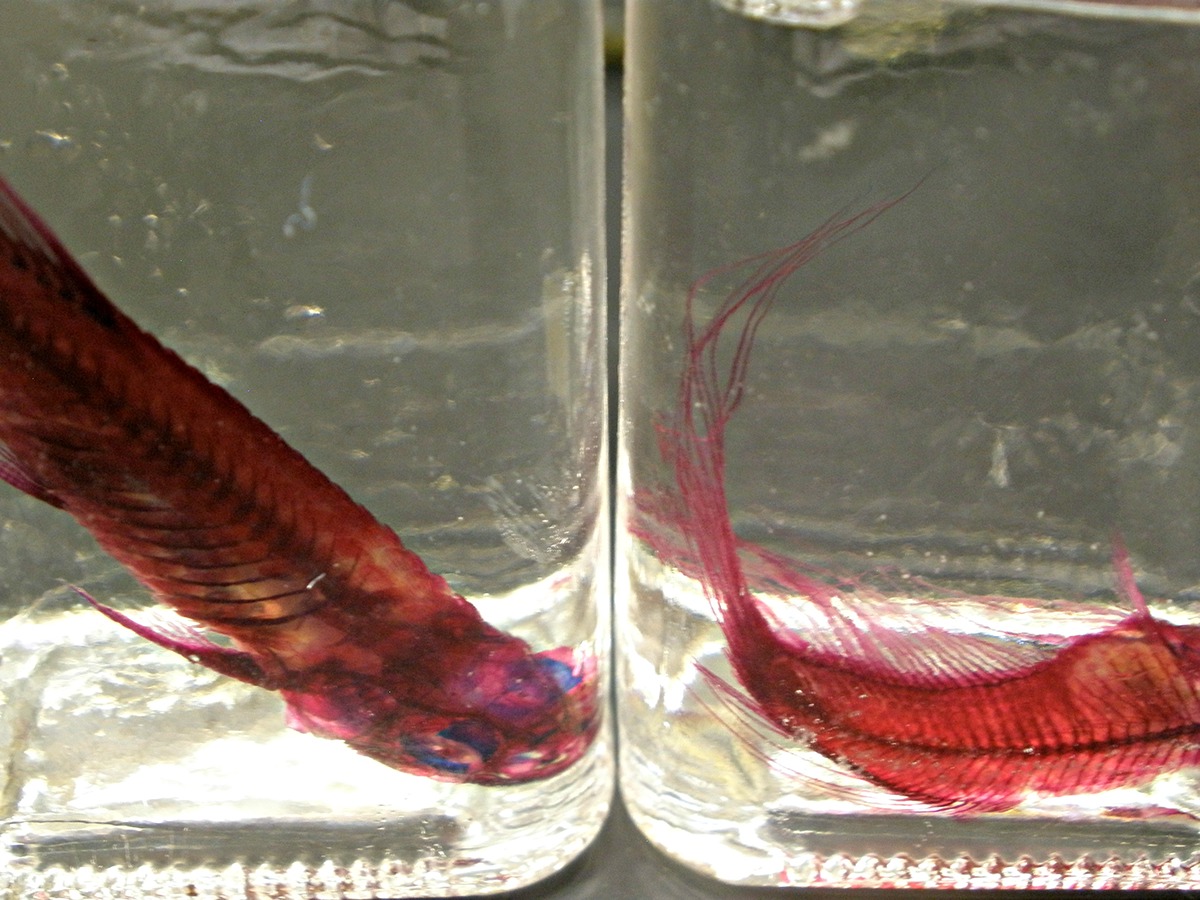
Small fish in their final containers in 95% glycerin with thymol crystals as an antifungal preservative.

The frog in her mason jar filled with a 95% glycerin solution with thymol crystals as an antifungal preservative. We are not sure if it will eventually sink down.
For future purposes, it may be better to use muscle stains with larger specimens.
For future purposes, it may be better to use muscle stains with larger specimens.
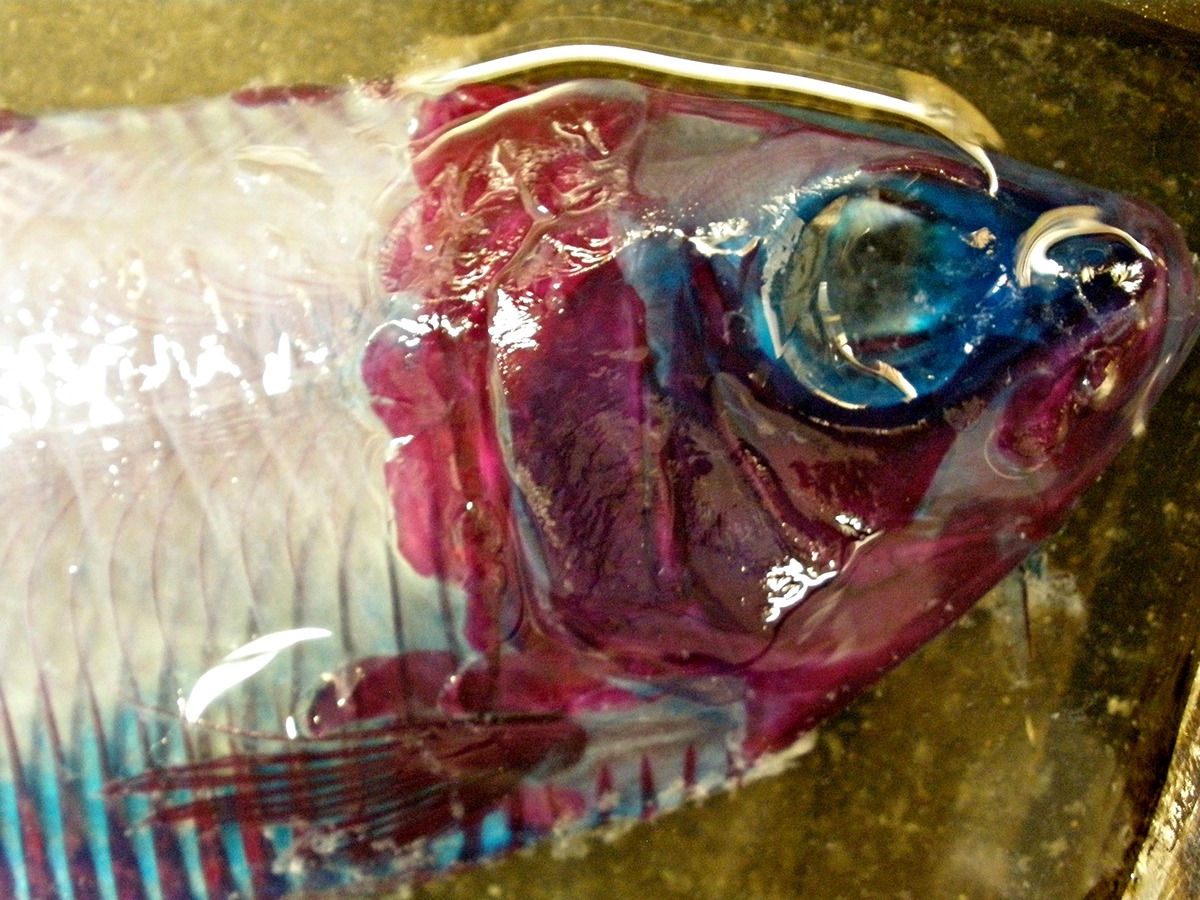
The head came out fantastic.
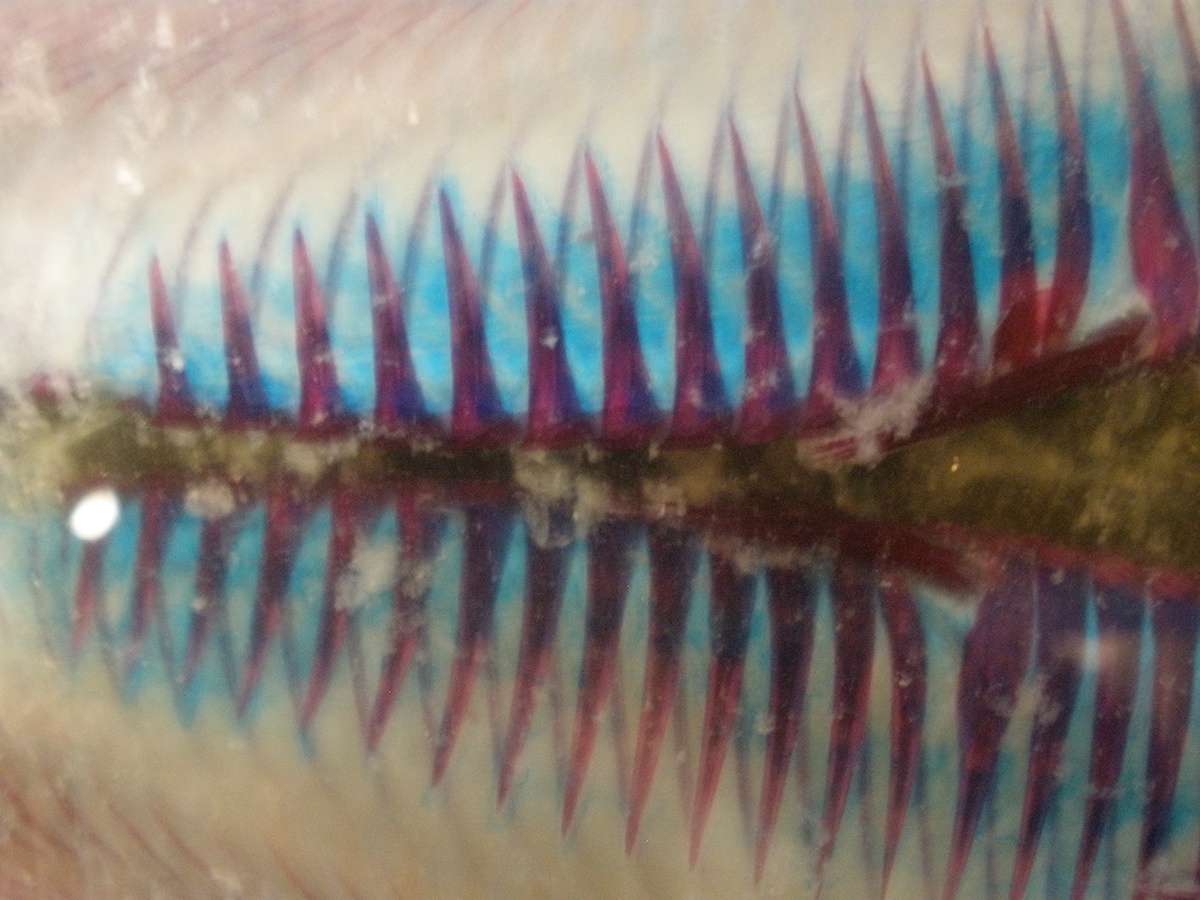

Herring ready to be moved into the final glycerin solution. We used 95% glycerin.

Small fish in the final step (glycerin and thymol). Unfortunately, they are not as transparent as desired because we omitted the descaling step (as the fish were too small) so the attached scales have been dyed red as well.

Herring after second round of trypsin.

She-frog in second round of trypsin.

The she-frog post bone stain awaiting transfer into trypsin.

Small fish post bone stain sitting in trypsin digest.

Herring in second round of trypsin digest.
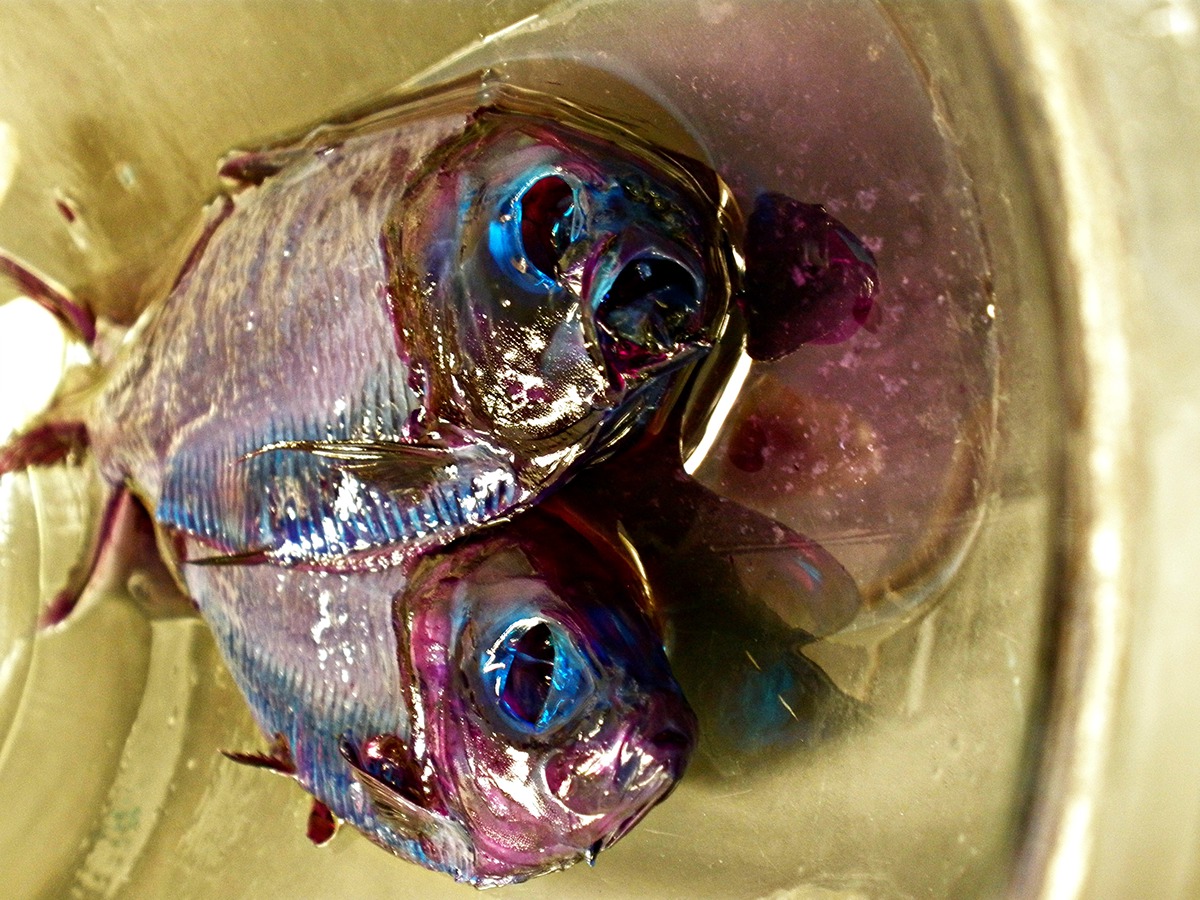
Herring after bone stain. It will then be returned to trypsin digest for further clearing.

She-frog placed into alizarin red bone stain.
Alizarin red 100mg, Potassium hydroxide, 0.5% 1000ml
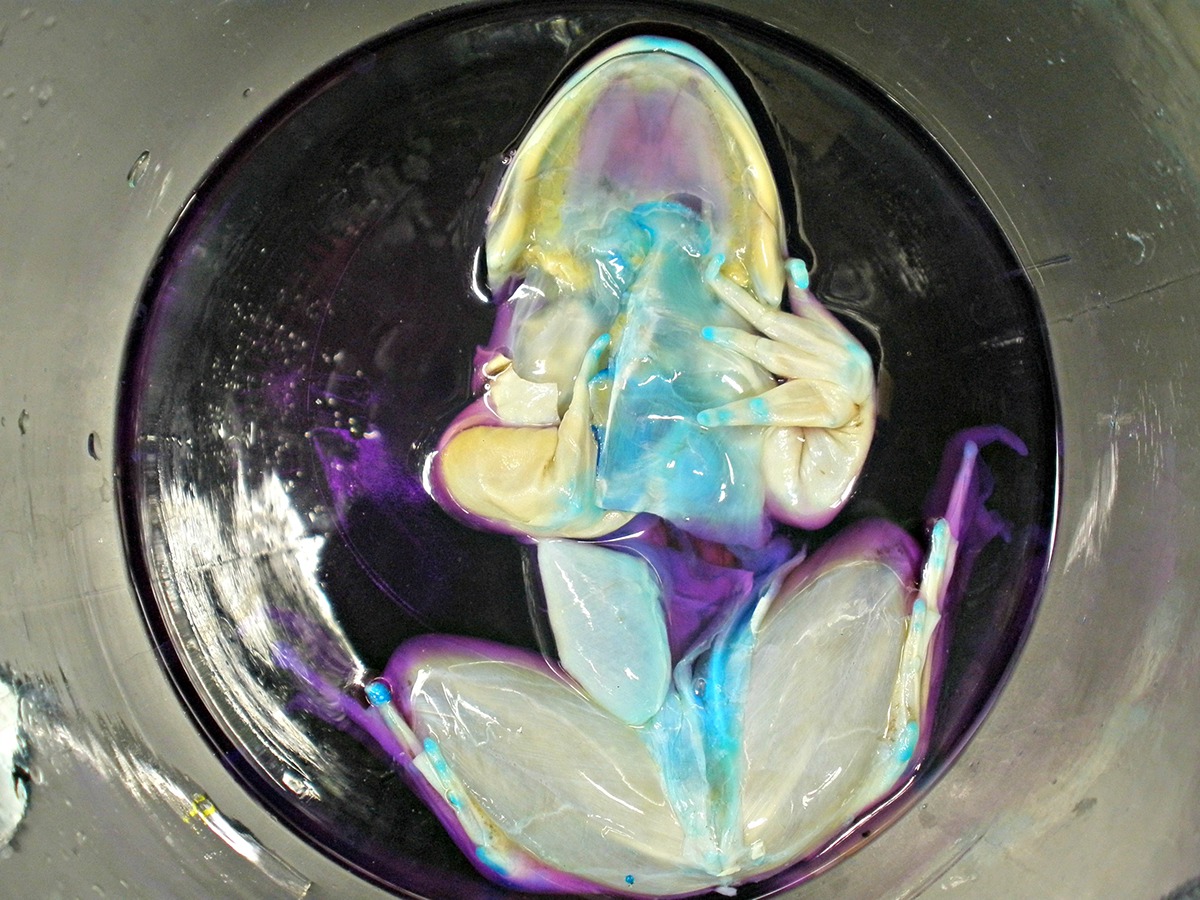
She-frog placed into alizarin red bone stain.




Small fish moved into alizarin red bone stain which will dye the bones a color ranging from red to purple, depending on how long it is left in.
Alizarin red 100mg, Potassium hydroxide, 0.5% 1000ml
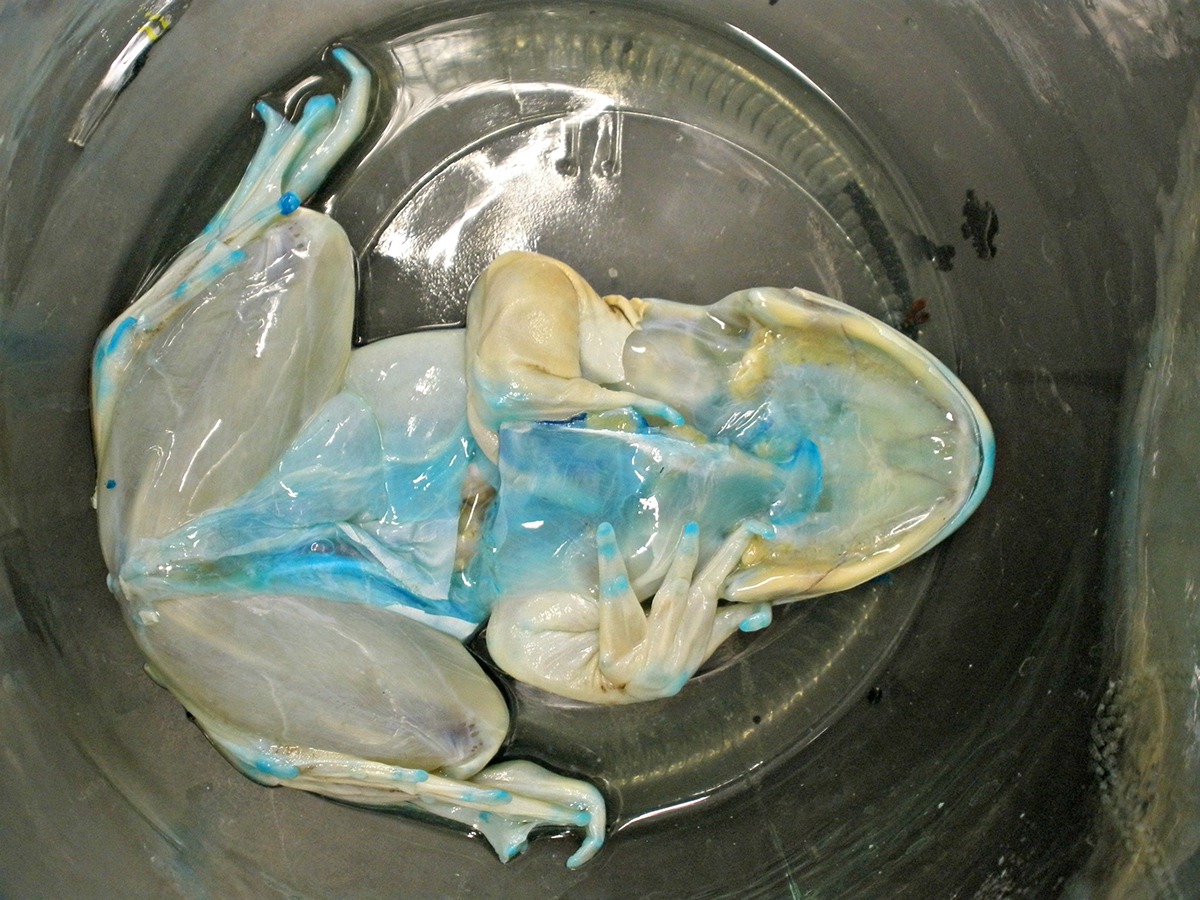
She-frog to be transitioned into alizarin red bone stain.

The skin bubbles seem to have some sort of fungal growth as evidenced by the black spots, which may be due to the saturated sodium borate which neutralizes pH and the exposure to air. The bubbles were deflated further and flipped over. Hopefully the highly basic solution of bone stain will prevent further growth.

Herring to be transitioned into alizarin red bone stain.
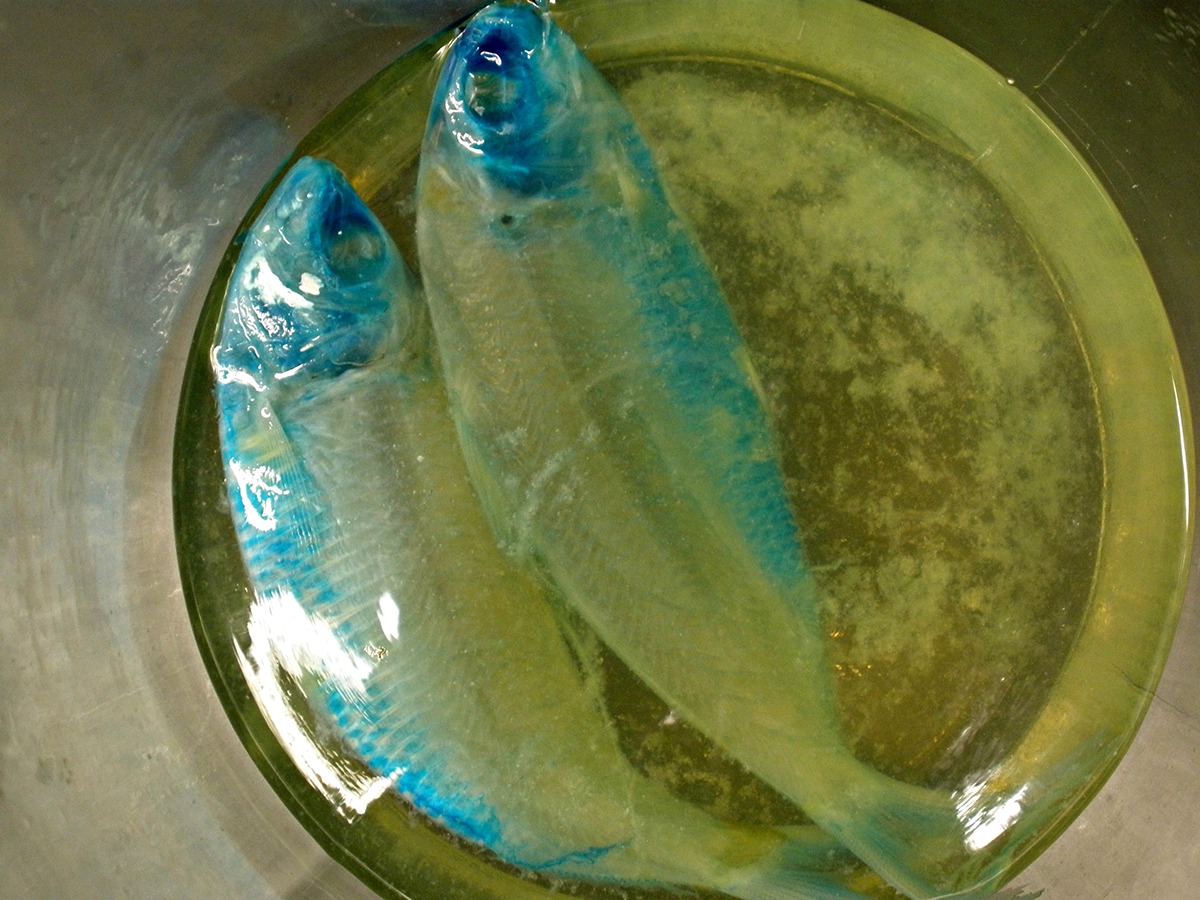
Herring in the second, stronger batch of trypsin digest.
Trypsin powder 10g, saturated sodium borate 300ml, distilled water 700ml
Trypsin powder 10g, saturated sodium borate 300ml, distilled water 700ml

She-frog has been stepped up to a stronger trypsin concentration. Unusually, two gas filled skin bubbles appeared.
Trypsin 10g, saturated sodium borate 300ml, distilled water 700ml
Trypsin 10g, saturated sodium borate 300ml, distilled water 700ml

Herring have been stepped up to a stronger trypsin concentration.
Trypsin 10g, saturated sodium borate 300ml, distilled water 700ml
Trypsin 10g, saturated sodium borate 300ml, distilled water 700ml


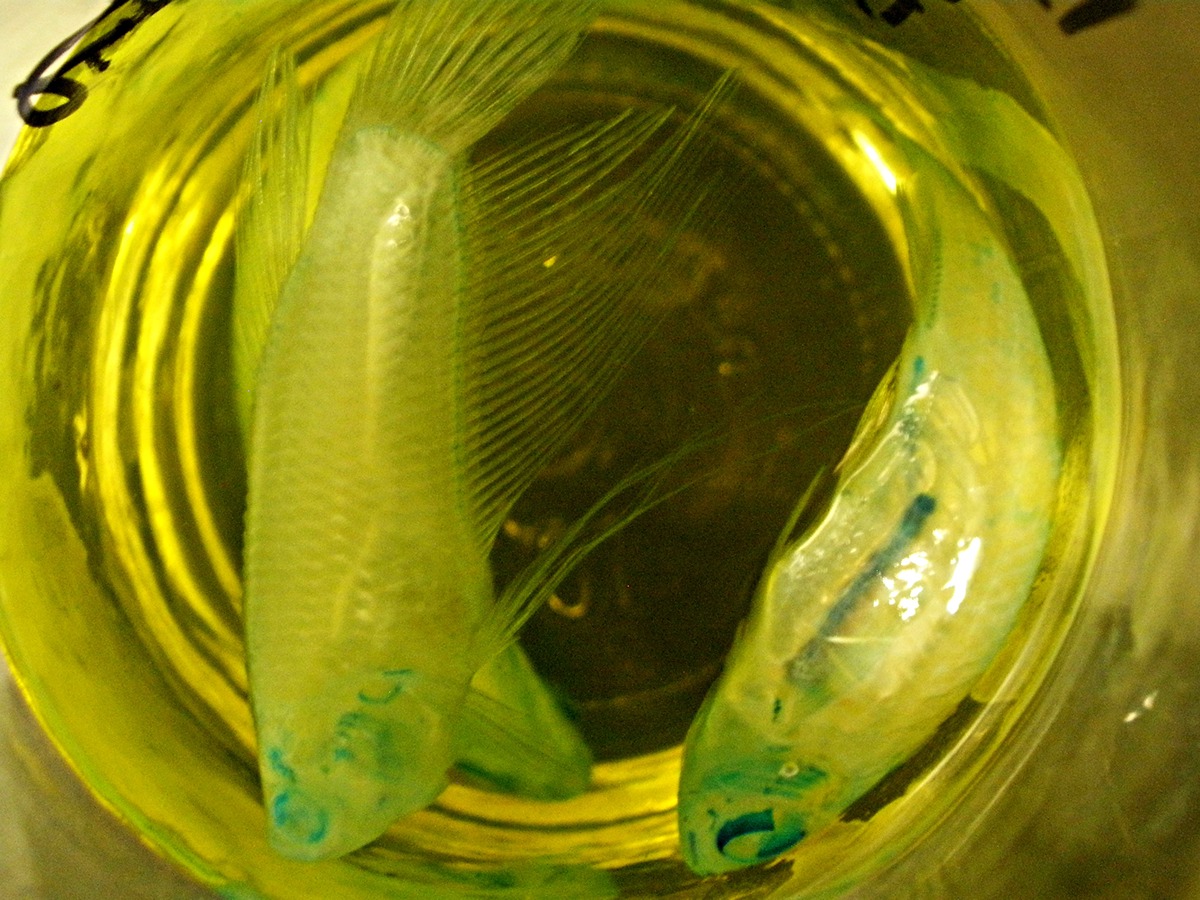
You can see the inner organs at this point.


Small fish sitting in trypsin digest after bleaching step. Bleaching helps to remove the scales and any pigmentation. The cartilage stain is fixed most notably on the eyes.
Bleaching solution: Hydrogen peroxide 1M 150ml, Potassium hydroxide 1M 850ml
Bleaching solution: Hydrogen peroxide 1M 150ml, Potassium hydroxide 1M 850ml



Note the dark bars running the sides of the fish which are the spines.

Herring in trypsin digest. The sodium borate in trypsin digest neutralizes any remaining liquid from the bleaching step that came before it.

She-frog post evisceration and skin removal to facilitate better penetration of trypsin, a digestive enzyme that will turn the tissues clear. The original concentration was too low, but still it worked to some degree, as evidenced by the leg muscles which are somewhat transparent. In addition, the frog has shrunken considerably from its original size.

Herring in neutralizing saturated sodium borate solution.

She-frog post-bleaching. Note how the frog's skin is much lighter than it was when it was in the alcian blue cartilage stain.
Bleaching solution: Hydrogen peroxide 1M 150ml, Potassium hydroxide 1M 850ml

She-frog post-bleaching.

Danios and a betta in cartilage stain.
Alcian blue 100mg, Glacial acetic acid 400ml, Ethanol, 95% 600ml

Herring in cartilage stain; at this point, the original coloring of the scales is still intact.
Alcian blue 100mg, Glacial acetic acid 400ml, Ethanol, 95% 600ml

She-frog sitting in alcian blue cartilage stain which will hence turn all cartilaginous parts blue.
Alcian blue 100mg, Glacial acetic acid 400ml, Ethanol, 95% 600ml
Alcian blue 100mg, Glacial acetic acid 400ml, Ethanol, 95% 600ml

Note the original skin color of the frog. It may have been a bit darker before the formalin fixation and dehydration processes.


